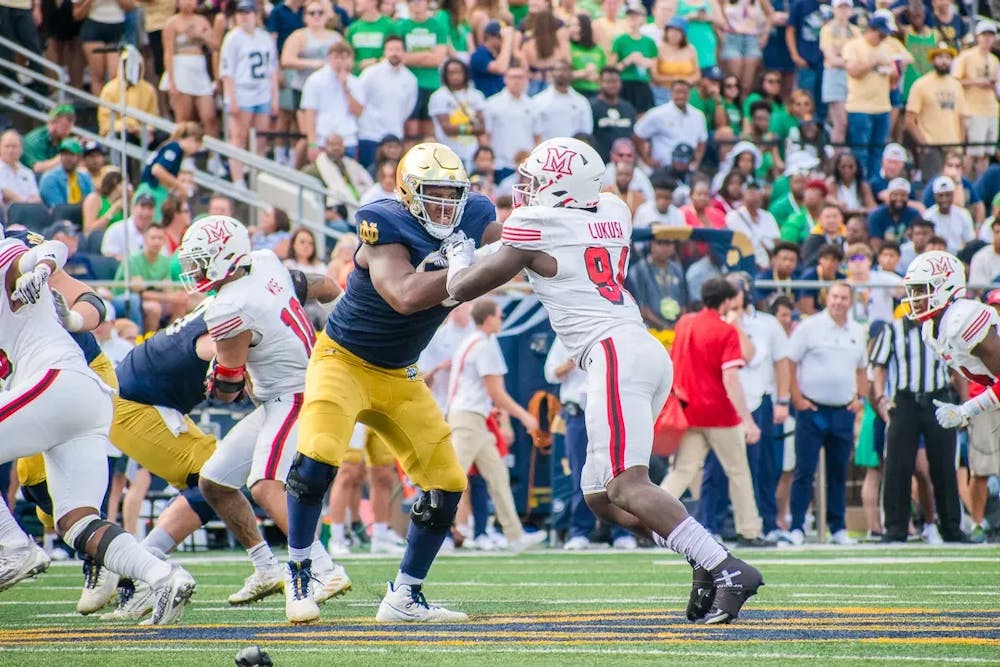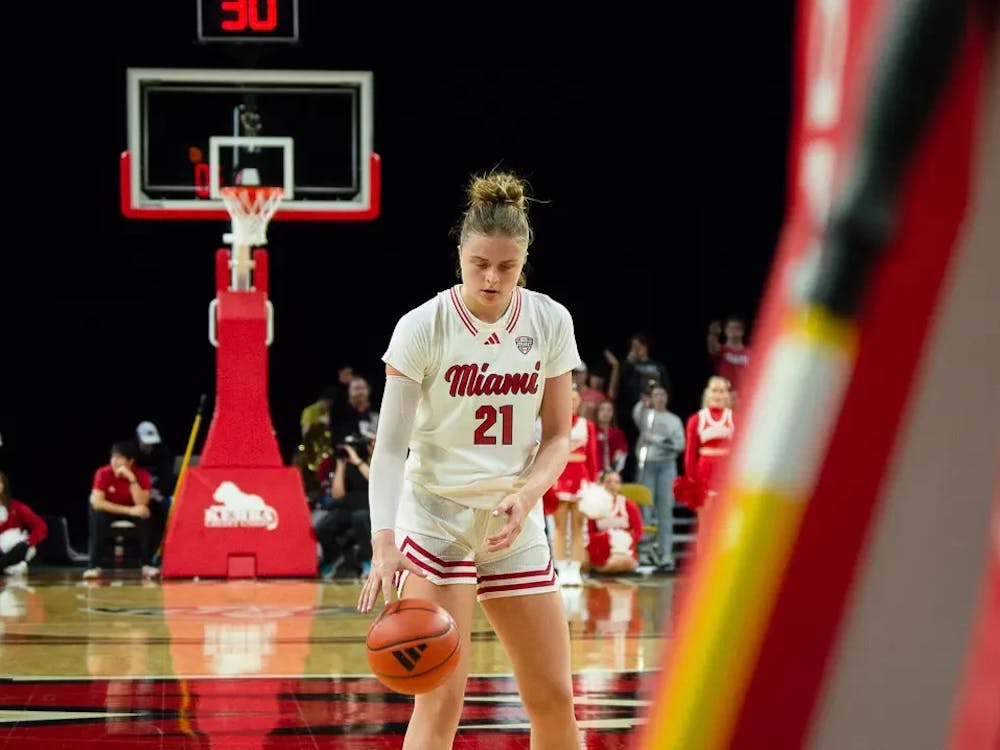At the start of October, the Miami University RedHawks football team didn’t look like a conference championship contending program.
The team that stepped up and won the 2023 Mid-American Conference (MAC) championship sat at 1-4 before Oct. 12. Their only win at the time was an overtime victory against the University of Massachusetts, a team that now sits at 2-8.
Since then, however, the RedHawks have won six straight games to tie for first in the MAC.
Miami consistently falters at the start of the season against non-conference opponents. Since 2014, the RedHawks have entered MAC play under .500 each year except 2022.
However, despite poor starts, Miami finished above .500 in five seasons since 2014. The 2019 season saw the RedHawks convert a 1-3 start to a 8-6 finish and a MAC championship.
The schedule typically has the RedHawks visiting Power Four opponents to begin the season. This year, they visited the Northwestern University Wildcats and the University of Notre Dame Fighting Irish and welcomed the University of Cincinnati Bearcats.
These Power Four opponents typically have advantages over the RedHawks, primarily an increased home-game attendance. Despite playing in a different stadium, the Wildcats brought in 12,000 people to the stands. The Notre Dame game put the RedHawks in front of nearly 80,000 fans.
For head coach Chuck Martin, however, these games are an early test for the team to show what he needs to work on before MAC play.
“You get a good view of your strengths and weaknesses,” Martin said. “We did plenty of good things those first three weeks. We didn’t win any of them, but [if] you watch the Notre Dame game, we did plenty of good things against them. We outplayed them for the first 25 minutes. If we could do that against Notre Dame, that’s probably something we should rely on.”
The attendance at these games remains a primary difference between conference play later in the season. This year’s Battle for the Victory Bell against Cincinnati, which took place at Yager Stadium, brought in almost 25,000 people.
On-field communication for both the offense and defense needs to be adjusted to accommodate for crowd noise. For sixth-year quarterback Brett Gabbert, this adjustment slows down the speed of the offense at first.
“In the first couple games of the year, especially away games, it’s definitely hard to communicate on offense when I’m checking with the o-line or receivers,” Gabbert said. “You definitely have to take more time to communicate to everybody, whether it’s wideouts, giving them signals, or telling the o-line if it’s a run play or pass protection.”
Enjoy what you're reading?
Signup for our newsletter
Sixth-year linebacker Matt Salopek added that a major difference with Power Four opponents is the size of the offensive lineman. Notre Dame sports a 6-foot-8, 325 pound lineman in Tosh Baker. For Miami’s defense, lining up against guys like Baker requires adaptation.
However, Salopek said Miami’s opponents, whether they’re Power Four or in the MAC, need to be treated the same.
“You got some teams with bigger o-lines, faster guys on the outside, but we see very athletic guys and capable guys in our conference,” Salopek said. “There’s capable guys in our conference that can do just as good.”
Through the first three games of 2024, the RedHawks held the lead over their opponents for under 10 minutes. Before their first win of the season, the offense put up 876 total yards, but only two touchdowns.
This early performance was hampered by the defenses they faced. Notre Dame currently boasts the sixth-best defense in average yards allowed.
Miami’s early slate of games gives the offense an early, and arguably its most difficult, task of the season. But for Martin, figuring out their weaknesses early on is vital to the team’s overall success come December.
“We want to expose [our] weaknesses,” Martin said. “You go to practice and you say, ‘OK, these weaknesses were exposed, let’s get better at them.’ If you play three softies, and you win by 30, you don’t figure out what your strengths and weaknesses are. That’s the biggest thing for me.”
Since their week six loss to the University of Toledo Rockets, the RedHawks have gone 6-0. Wins against the Ohio University Bobcats and Central Michigan University Chippewas proved that Miami isn’t out of postseason contention.
A huge aspect of the team’s success has been greater involvement from offensive leaders. Junior receiver Reggie Virgil has scored in each of the RedHawks last six games and leads the team with 498 yards during Miami’s undefeated stretch.
For Gabbert, involvement from every player on offense has been crucial to their success in the back half of the season.
“It’s everybody,” Gabbert said. “It’s Reggie, it’s Javon, it’s Cade, it’s our running backs. They’ve all been doing extremely well pretty much [since] Toledo. It’s a group effort.”
One more game lies ahead for Miami against another championship-contending team in the Bowling Green State University Falcons.
Contributing reporting done by Colin McDonald




